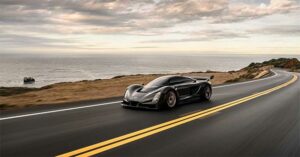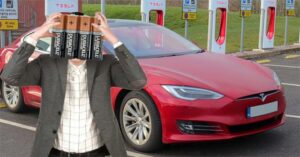
Bilal Ahmed, a mathematics teacher from Kashmir, India, devoted 11 years to constructing his very own solar-powered vehicle. His creation involved transforming an old Maruti Suzuki car, originally powered by an internal combustion engine.
In 2009, the project was initiated by Bilal Ahmed without any financial backing from an organization or sponsor. Over the course of 11 years, Bilal Ahmed successfully completed his solar-powered car project using his own funds totaling 1.5 million rupees (equivalent to 442 million VND). He affectionately named his electric car YMC, representing the initials of his two children, Yosha and Maisha.

Bilal Ahmed’s goal is to create an environmentally friendly car with luxurious features that will remain affordable even as fuel prices rise, making it accessible to more than just the wealthy.
Bilal Ahmed attributed the knowledge he employed to construct his car to a combination of various car models from the 50s, as well as the guidance provided by experts.
The car is almost completely covered with solar panels, which can be found on the hood, side window panels, rear windshield, and trunk lid.

Ahmed explained that due to the car’s small size and limited battery surface area, he opted for a single crystal solar battery in order to generate maximum power using the least amount of solar energy accumulated.
Furthermore, Ahmed adorned his self-made electric vehicle with bird-wing doors, reminiscent of the iconic DeLorean or the modern Aston Martin Valkyrie models, that elevate upwards.
In order to maximize the amount of daylight received by the car, the side doors are tilted up. This is particularly important in Kashmir where the weather conditions pose challenges for storing solar energy efficiently. The car’s solar panels are equipped with a direction adjustment system, enabling them to capture sunlight regardless of the car’s orientation.
Teacher Bilal Ahmed also disclosed that the braking system has the capability to produce electricity to charge the battery, consequently aiding in conserving energy.
Bilal Ahmed aspires to establish a company which will engage in mass-production of this distinctive electric vehicle model. This venture aims to generate employment opportunities for the youth in the area, all while allowing local residents to familiarize themselves with the technological advancements of the future in the form of electric vehicles.


